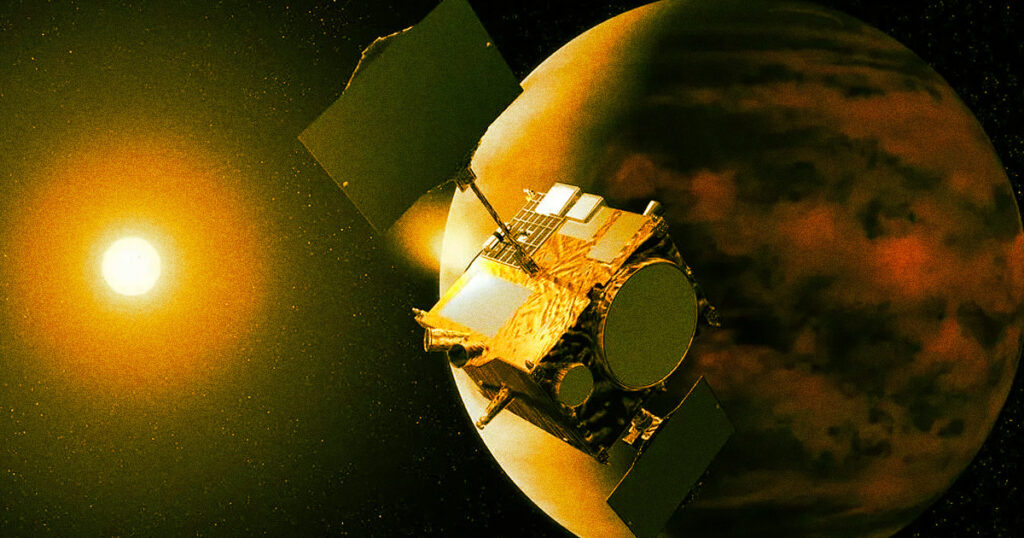Become extinct
The Japan Aerospace Exploration Agency (JAXA) Akatsuki space probe – the only ongoing mission to the planet Venus – may be on its last legs.
In a update on XJAXA’s Institute of Space and Astronautical Science said it lost contact with Akatsuki “after an operation in late April due to an extended period of low stability control mode.”
But it’s not a lost cause and the institute is “currently making efforts to restore communications with the spacecraft.”
However, should the probe remain silent, its loss will mean that humanity will be cut off from its only source of up-close observations of the strange, hellish planet.
Twin connection
Akatsuki, officially known as the Venus Climate Orbiter mission (PLANET-C), was launched in 2010 by JAXA and, after a few mistakes, entered orbit around its destination planet in 2015.
Although its shape is modest – essentially a small box no more than five feet in any direction – the sturdy little probe was stacked with five cameras that it used to tirelessly image Venus’ atmosphere.
His contributions have been invaluable to astronomers, especially given the paucity of long-duration Venus missions. To put things in perspective, our most detailed images of the surface come from NASA’s Magellan spacecraft from the early 1990s.
Are not a very hospitable planet. Venus’s atmosphere is so thick with carbon dioxide that the pressure it creates can crush metal. Temperatures are hot enough to even melt some metals, often exceeding 800 degrees Fahrenheit. And of course there is the haze of corrosive clouds that makes observing the surface extremely difficult. Even orbiting the Earth can be dangerous.
But as hostile as the planet is to seemingly everything that comes near, we can’t help but be fascinated by it. It’s our planet’s ‘twin’, with a similar size, mass and composition – and it also happens to be right next door.
Greener pastures
If JAXA’s probe cannot be recovered, this would not be an unexpected loss. Akatsuki has long outlived its originally expected lifespan of 4.5 years.
Now, almost a decade of faithful service later, no one can blame the poor thing for retiring late.
Still, it will leave a big hole. NASA plans to launch two missions to Venus, DAVINCI And Veritasbut these are not expected to launch until 2029 and 2031 respectively. So one can only hope that Akatsuki stays around until there is a worthy successor.
More about space: Astronomers are surprised after discovering that the small moon is actually two small moons in a trench coat







